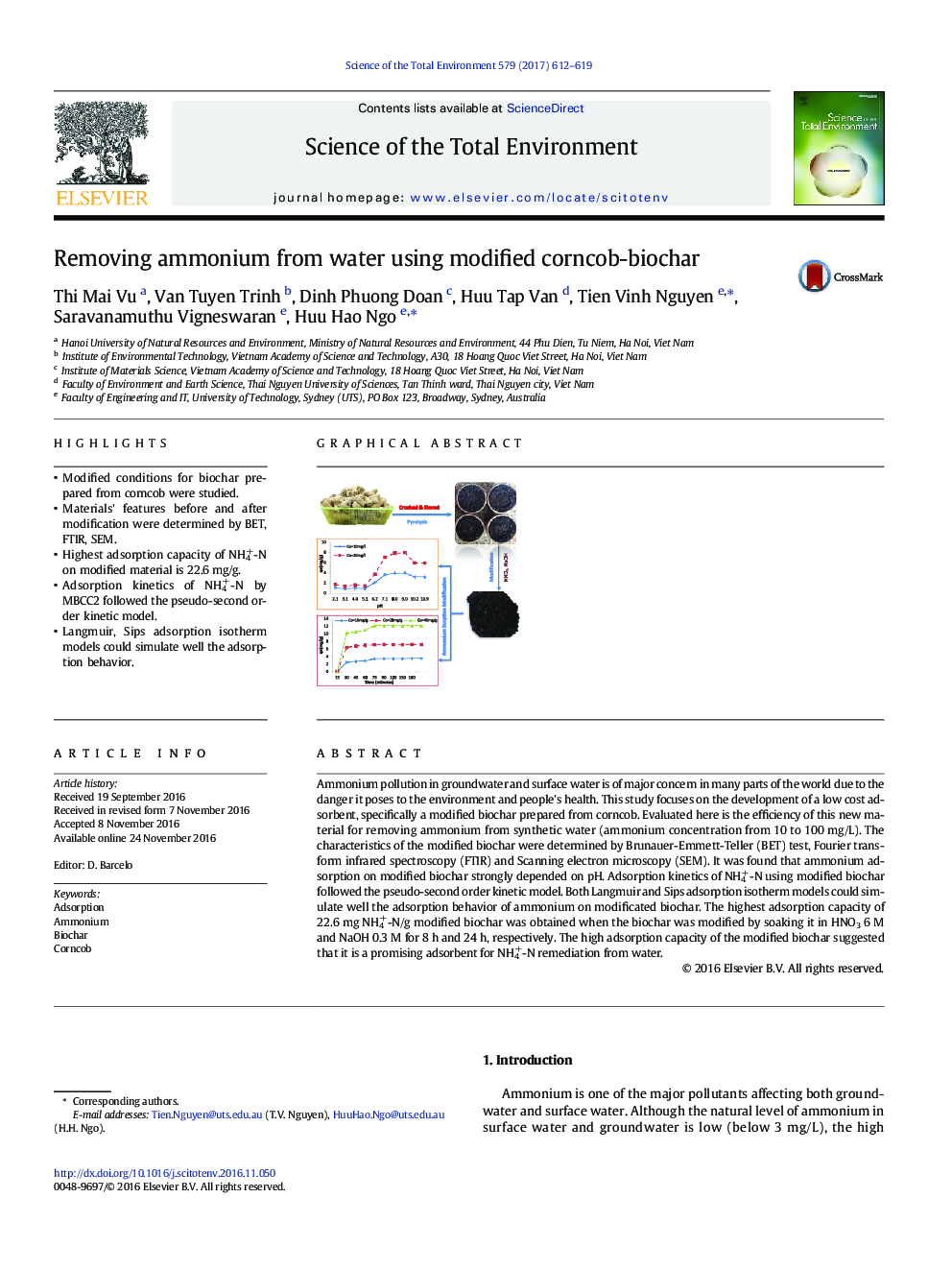| Article ID | Journal | Published Year | Pages | File Type |
|---|---|---|---|---|
| 5751414 | Science of The Total Environment | 2017 | 8 Pages |
â¢Modified conditions for biochar prepared from corncob were studied.â¢Materials' features before and after modification were determined by BET, FTIR, SEM.â¢Highest adsorption capacity of NH4+-N on modified material is 22.6 mg/g.â¢Adsorption kinetics of NH4+-N by MBCC2 followed the pseudo-second order kinetic model.â¢Langmuir, Sips adsorption isotherm models could simulate well the adsorption behavior.
Ammonium pollution in groundwater and surface water is of major concern in many parts of the world due to the danger it poses to the environment and people's health. This study focuses on the development of a low cost adsorbent, specifically a modified biochar prepared from corncob. Evaluated here is the efficiency of this new material for removing ammonium from synthetic water (ammonium concentration from 10 to 100Â mg/L). The characteristics of the modified biochar were determined by Brunauer-Emmett-Teller (BET) test, Fourier transform infrared spectroscopy (FTIR) and Scanning electron microscopy (SEM). It was found that ammonium adsorption on modified biochar strongly depended on pH. Adsorption kinetics of NH4+-N using modified biochar followed the pseudo-second order kinetic model. Both Langmuir and Sips adsorption isotherm models could simulate well the adsorption behavior of ammonium on modificated biochar. The highest adsorption capacity of 22.6Â mg NH4+-N/g modified biochar was obtained when the biochar was modified by soaking it in HNO3 6Â M and NaOH 0.3Â M for 8Â h and 24Â h, respectively. The high adsorption capacity of the modified biochar suggested that it is a promising adsorbent for NH4+-N remediation from water.
Graphical abstractDownload high-res image (186KB)Download full-size image
